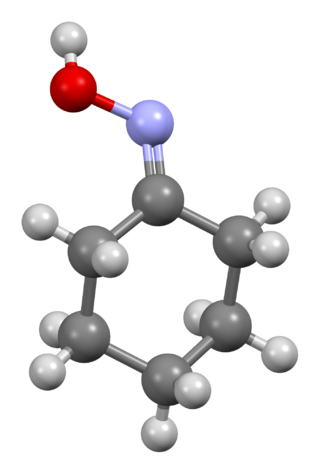Top Qs
Timeline
Chat
Perspective
Cyclohexanone oxime
Chemical compound From Wikipedia, the free encyclopedia
Remove ads
Cyclohexanone oxime is an organic compound containing the functional group oxime. This colorless solid is an important intermediate in the production of nylon 6, a widely used polymer.
Remove ads
Preparation
Cyclohexanone oxime can be prepared from the condensation reaction between cyclohexanone and hydroxylamine:[1]
- C5H10CO + H2NOH → C5H10C=NOH + H2O
Alternatively, another industrial route involves the reaction of cyclohexane with nitrosyl chloride, which is a free-radical reaction. This method is advantageous as cyclohexane is much cheaper than cyclohexanone.
Reactions
The most famous and commercially important reaction of cyclohexanone oxime is Beckmann rearrangement yielding ε-caprolactam, which is used to produce Nylon 6:

This reaction is catalyzed by sulfuric acid,[1] but industrial scale reactions use solid acids.[2]
Typical of oximes, the compound can be reduced by sodium amalgam to produce cyclohexylamine.[3] It can also be hydrolyzed with acetic acid to give back cyclohexanone.
Remove ads
References
Wikiwand - on
Seamless Wikipedia browsing. On steroids.
Remove ads





